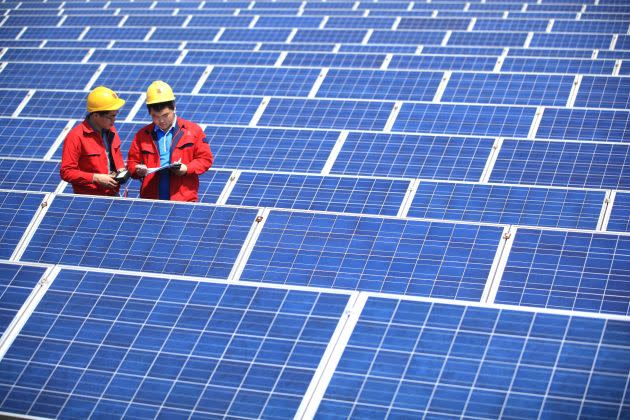In the Ripples of New Climate Bill, Fashion Speaks Out

With news of the Senate passing the U.S.’s latest climate package of its kind, the country’s efforts — and those of fashion and beauty — to combat the climate crisis are in closer reach.
“The Inflation Reduction Act [a whopping $369 billion in funding] is the most significant piece of environmental legislation in the last three decades,” Sarah Edwards, head of North America at Eunomia Research and Consulting, told WWD. “In addition to the Act being estimated to cut U.S. greenhouse gas emissions around 40 percent by 2030, it also signals to the other countries as well as private investors to put climate at the forefront of policy and investment discussions, which will result in even greater global impacts.”
More from WWD
Diane Keaton, Elizabeth Lail, Taylour Paige at 'Mack & Rita' Los Angeles Premiere
Serena Williams' Best On-Court Tennis Outfits Through the Years
Eunomia counsels public sector clients, companies (recently DHL) and cities on waste reduction, greenhouse gas emissions and incoming policy — like what’s happening in circular textiles.
Across the board, the Act supports every industry’s efforts to reduce scope 1, 2 (direct) and 3 (indirect) emissions throughout their supply chains. Investments include everything from electric vehicles to resiliency strategies for farmers facing prevalent extreme weather events, as witnessed in recent Appalachian deluges, West Coast wildfires or ongoing heat waves.
Among the most important things to note for fashion, is that bigger corporations (with more than $1 billion in revenue) will have a new 15 percent tax to pay.
Edwards said that, “While some of the larger brands may be hit by the new 15 percent minimum tax on corporate profits, supporting infrastructure that builds in climate resilience can only be a good thing and is in line with changes that many brands are implementing.”
Lindsey Casella, vice president of marketing at Recycle Track Systems, similarly highlighted the importance of a low-carbon supply chain transition.
“The U.S.’s latest climate package passing in the Senate recognizes the gap in the supply chain for solutions, validating the role our government has in turning our country — previously a bad actor based on our carbon pollution being one of the highest in the world — into a good actor that plans to be a global leader in the fight against the destruction caused by fossil fuels,” she said.
Saying the Senate’s precedent in passing this historic package was “much needed,” Casella says the greater investments in energy, infrastructure and agriculture would drive down costs, and ultimately, incentivize companies to bring back raw material productions and manufacturing. It comes out to nearly $400 billion in tax credits over 10 years, glossing up switch-ups to electric vehicles, renewable energy sources, domestic production and more, in turn, taking the heat off of corporate taxes.
It’s more straightforward for some industries over others.
While these incentives may look more promising amid the climate bill, it will undoubtedly cause ripple effects — especially for the millions employed in the garment sector — elsewhere. Casella said it’s worth noting, that unlike fashion (which according to the AAFA, produces about 97 percent of its goods overseas), the beauty industry has a higher percentage of goods produced in the U.S. today because of shipping challenges and costs. Supply chain changes and job losses may be fewer for beauty.
Though the climate bill’s oil and gas provisions were noted concessions for staunch eco-advocates — with the measure allowing new oil drilling leases in the Gulf of Mexico and Alaska’s Cook Inlet — the legislation delivers a more urgent response to the climate crisis than the U.S. has yet seen.
Consumers, Casella said, are likely to request even more action from leading companies and the government, spawning further interrogation.
“Could the expansion of the IRS mirror the big four who are converting auditors into sustainability advisors? Outside of tracking taxes, could this larger organization take on a role in holding accountability of diversion through legal requirements, tracking contamination and carbon emissions?” she probed.
Where voluntary ESG reporting efforts continue to fall short, legal requirements may be likely to follow.
Sign up for WWD's Newsletter. For the latest news, follow us on Twitter, Facebook, and Instagram.
